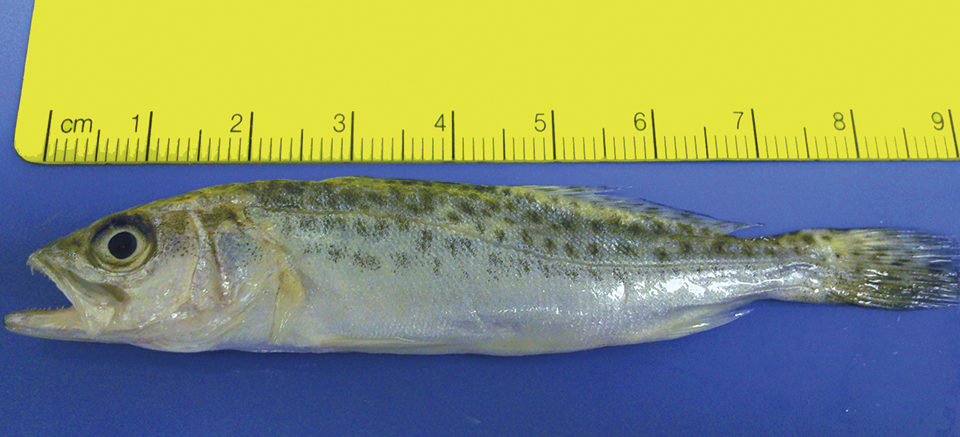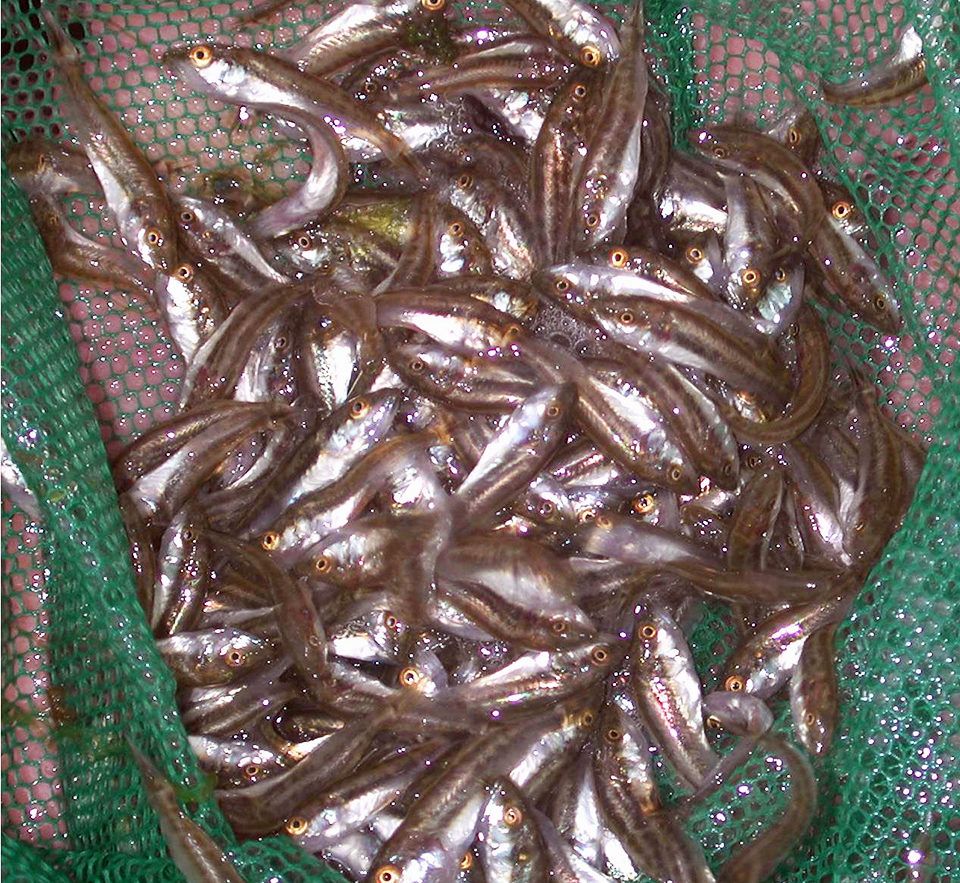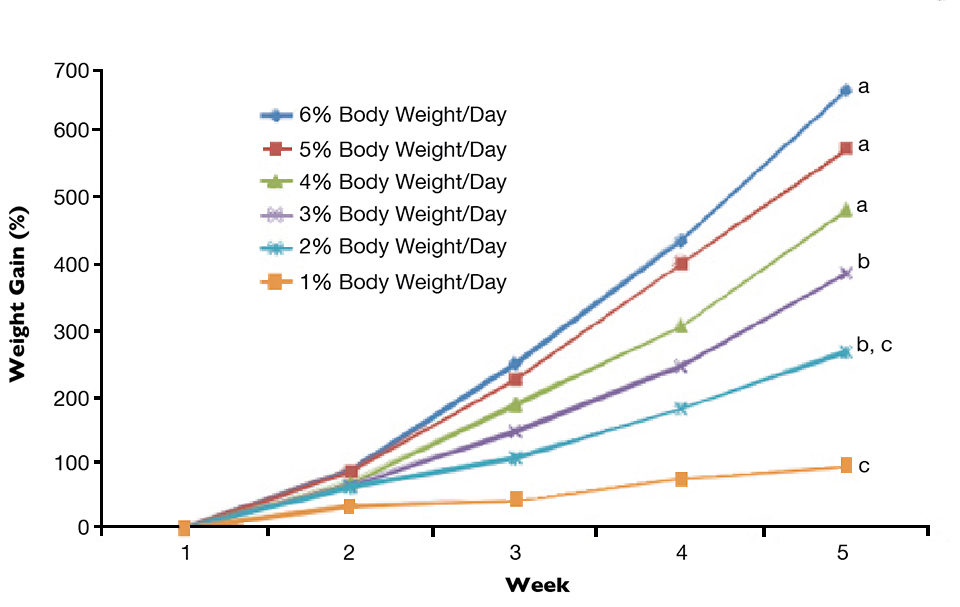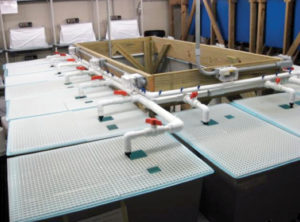Implications of involuntary exercise are substantial

The spotted sea trout (Cynoscion nebulosus) is one of the most popular sportfish in the United States, with numbers of landings steadily increasing since the early 1980s. More importantly, the per-unit effort required to catch these fish has also been increasing. With this popularity, high potential for overexploitation of the fishery exists, which could ultimately diminish wild stocks.
In the U.S. state of Texas, Texas Parks and Wildlife has initiated a stock enhancement program along the natural geographic range of spotted sea trout to supplement wild stocks. However, because few hatcheries exist for this species, the fishery could be severely impacted by sudden freezes, harmful algal blooms, hypoxia or pollution events. The need for fisheries conservation, which includes stock enhancement, implies a need for aquaculture of this species.
Nutrition studies
With this need in mind, the authors undertook two studies to address a few of the basic culture needs of spotted sea trout. The first study concentrated on identifying an appropriate feed rate for maintenance and maximum weight gain for juvenile spotted sea trout. The second evaluated the effects of involuntary exercise on growth. The overall goal of the studies was to determine a strategy to maximize efficiency of yield.
These studies are important from both aquaculture and fisheries conservation perspectives because they provide basic nutritional information that contributes to reducing the potential for overexploitation of this species. Optimization of daily feed requirements will enhance aquaculture production which, in turn, could decrease fishing pressure. Dietary data could also help optimize feed costs by providing information required for the least-cost formulation of commercial feeds.
For both studies, spotted sea trout fry of 25 to 35 mm total length were provided by Texas Parks and Wildlife Coastal Conservation Association/Central Power and Light Co. Marine Development Center in Corpus Christi, Texas.

Feed rate study
In the feed rate study, spotted seatrout were stocked into six sets of triplicate tanks at a density of 0.5 grams wet weight fish/L. Each tank – containing 150 L of water and with a bottom surface area of 0.35 square meters – was connected to an indoor, semi-closed recirculating aquaculture system (RAS).
This system contained a pressurized sand filter, biofilter, ultraviolet filter and protein skimmer. Temperature was maintained at 27 degrees-C and lighting was set for a photoperiod with 12 hours of light and 12 hours of darkness. Other water quality factors were maintained at levels appropriate for juvenile spotted sea trout.
For relevance to current farm-rearing situations, the fish were fed a commercial feed at six rates – 1 to 6 percent of total tank biomass per day – for five weeks. Feed was distributed via automatic feeders every 0.6 hour.
After the five weeks, fish fed at 4 to 6 percent wet body weight/day (BWD) had significantly higher growth rates than fish that received less feed (Fig. 1). The minimum feed rate for maintaining weight was estimated at about 0.8 percent BWD.

Because spotted sea trout are known for their voracious cannibalistic behavior, feed rates above 2 percent BWD are probably more adequate for preventing loss of stock. Significantly higher mortality was observed at the lowest feed rate treatment of 1 percent. This mortality was not the result of cannibalism in this study, but appeared to be associated with the availability of feed. In the culture of spotted sea trout, it is common to observe rapid growth and aggressive feeding in a small number of fish, which often reduces the availability of feed for smaller cohorts.
Exercise study

In the exercise study, efforts were made to evaluate the effects of involuntary swimming on growth response. An increasing number of studies have reported higher growth rates for fish “forced” to swim against a relatively slow but steady current. Conventional wisdom of bioenergetics would conclude that the result should be just the opposite.
Theoretically, exercised fish expend energy on locomotion (swimming), resulting in less energy available for growth for populations fed just below satiation. Increased feed-conversion efficiency and metabolism as well as reduced aggression and lower stress levels have been postulated as reasons for this effect. In fact, several studies have shown that some fish increase growth rate even when fed restricted diets.
To determine the effects of exercise on spotted sea trout biomass gain, fish were stocked into two round 1,900-L tanks at a density of 170 grams per cubic meter. The tanks were connected to a semi-closed RAS with mechanical and biological filtration. Temperature was not controlled and at an average 28 degrees-C, reflected that of ambient environmental conditions, whereas photoperiod was set with equal light and dark periods.
Fish in one tank were forced to swim against a current of 1.5 to 2.0 body lengths/second created by both horizontal and vertical manifolds. Untreated fish in the control tank were subjected to non-directional water flow, so their swimming was entirely voluntary.
Results showed that after 21 days, the standard lengths of exercised fish were 7 percent greater and wet weight was 26 percent higher than the values for fish in the control tank. Beyond 21 days, the system was not capable of generating a greater current velocity to accommodate the larger fish. After five weeks, the differences in biomass gain between the two groups were reduced to a 2 percent in standard length and 11 percent in wet weight.
Because the exercise treatments were not replicated, this data should be considered preliminary. On the other hand, the implications of involuntary exercise of cultured spotted sea trout are substantial. Further research into exercise studies needs to be performed with this species.
(Editor’s Note: This article was originally published in the July/August 2009 print edition of the Global Aquaculture Advocate.)
Now that you've finished reading the article ...
… we hope you’ll consider supporting our mission to document the evolution of the global aquaculture industry and share our vast network of contributors’ expansive knowledge every week.
By becoming a Global Seafood Alliance member, you’re ensuring that all of the pre-competitive work we do through member benefits, resources and events can continue. Individual membership costs just $50 a year. GSA individual and corporate members receive complimentary access to a series of GOAL virtual events beginning in April. Join now.
Not a GSA member? Join us.
Authors
-
M. Shane Merryman
Harte Research Institute for Gulf of Mexico Studies
Texas A & M University – Corpus Christi
6300 Ocean Drive, Unit 5869
Corpus Christi, Texas 78412-5869 USA -
Joe M. Fox, Ph.D.
Harte Research Institute for Gulf of Mexico Studies
Texas A & M University – Corpus Christi
6300 Ocean Drive, Unit 5869
Corpus Christi, Texas 78412-5869 USA
Tagged With
Related Posts

Aquafeeds
A look at protease enzymes in crustacean nutrition
Food digestion involves digestive enzymes to break down polymeric macromolecules and facilitate nutrient absorption. Enzyme supplementation in aquafeeds is a major alternative to improve feed quality and nutrient digestibility, gut health, compensate digestive enzymes when needed, and may also improve immune responses.

Intelligence
A brief look at genetically modified salmon
If approved by FDA, fast-growing genetically modified salmon will provide a safe and nutritious product similar to other farmed Atlantic salmon.

Health & Welfare
A holistic management approach to EMS
Early Mortality Syndrome has devastated farmed shrimp in Asia and Latin America. With better understanding of the pathogen and the development and improvement of novel strategies, shrimp farmers are now able to better manage the disease.

Aquafeeds
A look at India’s fish feed industry
India's fish-farming industry makes limited use of modern feeds, providing potential for the feed sector to grow. Commercial feeds are predominantly used for pangasius farming, followed by a rising popularity in carp culture.


